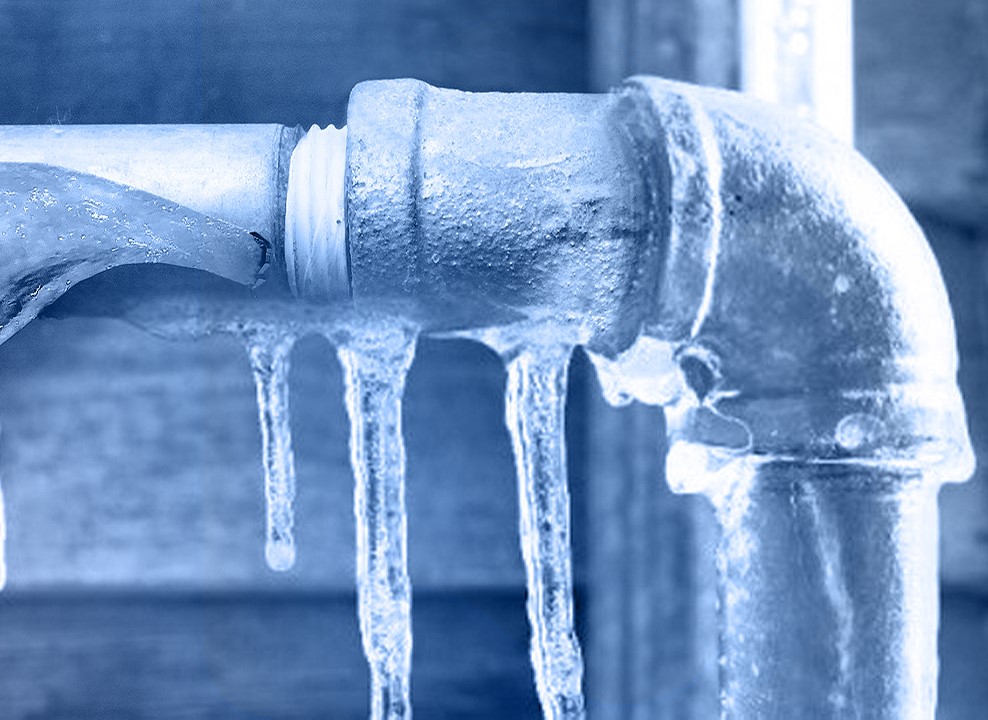Just about every person seems to have their own individual perception on the subject of How to prepare your home plumbing for winter weather.

Winter can wreak havoc on your pipes, especially by freezing pipelines. Right here's how to prevent it from happening and what to do if it does.
Intro
As temperatures drop, the threat of icy pipelines increases, possibly bring about pricey fixings and water damages. Comprehending just how to avoid frozen pipes is vital for homeowners in chilly environments.
Understanding Icy Pipes
What causes pipes to freeze?
Pipes ice up when revealed to temperatures below 32 ° F (0 ° C) for prolonged periods. As water inside the pipelines freezes, it increases, taxing the pipeline walls and potentially creating them to burst.
Dangers and damages
Icy pipelines can lead to water system disturbances, residential property damages, and expensive repair services. Burst pipes can flood homes and trigger substantial structural damages.
Indications of Frozen Water Lines
Determining frozen pipelines early can avoid them from bursting.
Exactly how to identify frozen pipes
Try to find lowered water flow from faucets, unusual odors or noises from pipelines, and visible frost on exposed pipelines.
Prevention Tips
Insulating vulnerable pipes
Cover pipelines in insulation sleeves or use heat tape to secure them from freezing temperature levels. Focus on pipes in unheated or external locations of the home.
Heating strategies
Keep interior spaces appropriately heated up, specifically locations with pipes. Open up cupboard doors to enable warm air to flow around pipes under sinks.
Shielding Outside Pipes
Yard hose pipes and outside taps
Separate and drain garden pipes before winter season. Install frost-proof spigots or cover exterior faucets with shielded caps.
What to Do If Your Pipelines Freeze
Immediate activities to take
If you suspect frozen pipes, maintain taps available to relieve stress as the ice melts. Use a hairdryer or towels soaked in hot water to thaw pipelines gradually.
Long-Term Solutions
Structural modifications
Take into consideration rerouting pipes far from exterior wall surfaces or unheated locations. Include extra insulation to attic rooms, cellars, and crawl spaces.
Upgrading insulation
Purchase top notch insulation for pipes, attic rooms, and walls. Proper insulation helps maintain consistent temperatures and minimizes the risk of frozen pipes.
Conclusion
Avoiding frozen pipes requires proactive steps and quick actions. By comprehending the reasons, indications, and safety nets, homeowners can shield their pipes throughout cold weather.
5 Ways to Prevent Frozen Pipes
Drain Outdoor Faucets and Disconnect Hoses
First, close the shut-off valve that controls the flow of water in the pipe to your outdoor faucet. Then, head outside to disconnect and drain your hose and open the outdoor faucet to allow the water to completely drain out of the line. Turn off the faucet when done. Finally, head back to the shut-off valve and drain the remaining water inside the pipe into a bucket or container. Additionally, if you have a home irrigation system, you should consider hiring an expert to clear the system of water each year.
Insulate Pipes
One of the best and most cost-effective methods for preventing frozen water pipes is to wrap your pipes with insulation. This is especially important for areas in your home that aren’t exposed to heat, such as an attic. We suggest using foam sleeves, which can typically be found at your local hardware store.
Keep Heat Running at 65
Your pipes are located inside your walls, and the temperature there is much colder than the rest of the house. To prevent your pipes from freezing, The Insurance Information Institute suggests that you keep your home heated to at least 65 degrees, even when traveling. You may want to invest in smart devices that can keep an eye on the temperature in your home while you’re away.
Leave Water Dripping
Moving water — even a small trickle — can prevent ice from forming inside your pipes. When freezing temps are imminent, start a drip of water from all faucets that serve exposed pipes. Leaving a few faucets running will also help relieve pressure inside the pipes and help prevent a rupture if the water inside freezes.
Open Cupboard Doors
Warm your kitchen and bathroom pipes by opening cupboards and vanities. You should also leave your interior doors ajar to help warm air circulate evenly throughout your home.

As a reader on Prevent Frozen Pipes , I thought sharing that article post was necessary. For those who enjoyed our page kindly don't forget to pass it around. Thanks for your time. Return soon.
Schedule Free Estimate